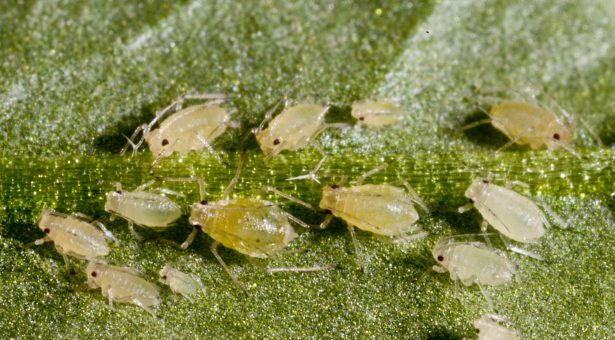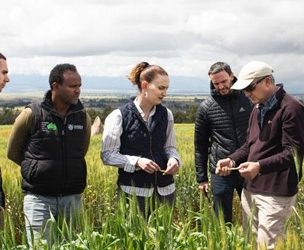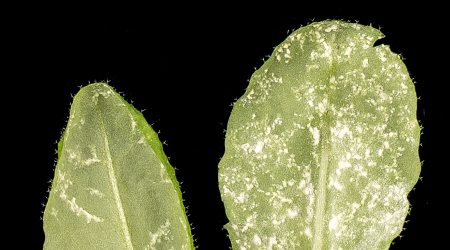Key to aphid invasion success found

Aphids are some of the most destructive insect pests of crop plants, not only through the damage they cause from feeding but also through transmitting a variety of economically important diseases.
Part of what makes them so effective is the way they can control some of the activities of plants, suppressing their defences and so helping the aphids feed.
New research from the John Innes Centre, an institute of the Biotechnology and Biological Sciences Research Council, has identified components of the aphid’s saliva that manipulate the plants defences.
Many pathogenic organisms that cause plant diseases secrete proteins, called effectors, which overcome the host plant’s defence mechanisms and so ensure the success of the pathogen.
Dr Jorunn Bos, working with Dr Saskia Hogenhout at the John Innes Centre, used knowledge gained about the effectors produced by plant pathogens to identify possible effector proteins in the saliva of aphids.
Plant pathogen effector proteins share a number of common features, in particular a signal peptide that directs the cell to excrete the effector proteins.
The researchers screened thousands of publicly available aphid saliva gland proteins, identifying 48 potential candidates for effector proteins.
Using an assay system developed for this study they were able to study the effects of these candidate effectors on plant defence responses as well as aphid fecundity. Three of the candidates were found to trigger plant defences and/or affect the performance of aphids, suggesting that they may be used by the aphids as effectors.
“This is the first time that specific effector proteins with activities in plants have been identified in aphid saliva, and this pioneering work is giving us a better chance of understanding exactly how aphids manipulate plants to their own benefit” said Dr Saskia Hogenhout. “This knowledge will be crucial if we are to develop novel, sustainable ways of controlling aphids and some of the devastating diseases they transmit.”
Prior to this, Jorunn worked with Professor Sophien Kamoun of The Sainsbury Laboratory on effector proteins in the pathogen that causes late blight in potatoes, Phytopthora infestans.
In particular, they focused on the first effector gene identified in P. infestans (Avr3a), which Jorunn characterised for her PhD project under the supervision of Sophien Kamoun at the Ohio Agricultural Research and Development Centre (OARDC) at the Ohio State University.
In collaboration with Paul Birch at the Scottish Crop Research Institute and the University of Glasgow, the precise target of Avr3a was uncovered.
It was found that Avr3a blocks the plant from deploying part of its defence mechanism, so aiding the pathogen’s entry into the plant. In fact, this mechanism is vital to the success of the pathogen invasion, as when the researchers silenced Avr3a, P. infestans lost its invasive abilities.
Combining fundamental understanding of the pathogen effector proteins with the increasing amount of genomic data from aphid species has been key to identification of the first aphid saliva effector proteins.
The precise molecular targets and pathways that are affected by these newly identified aphid saliva effector proteins are now being studied both at the John Innes Centre and at the Scottish Crop Research Institute (SCRI), where Jorunn Bos has recently started an Independent Research Fellowship funded by the Royal Society of Edinburgh and the Scottish Government.


